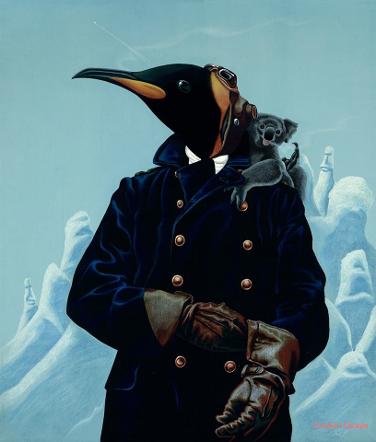This past weekend the Cheltenham Festival of Literature had a panel featuring the finalists for the Booker Prize. As you should know, Karen Joy Fowler is one of those writers, and on her way to Cheltenham she stopped off to do a reading for Toppings in Bath. She has, after all, written The Jane Austen Book Club, and had not visited Bath before. A visit was clearly overdue. Obviously I had to go along and show support.
I’m not going to say much more about We Are All Completely Beside Ourselves. There’s a review here if you are interested. What I want to talk about (and those of you who have read the book will know why this is relevant) is animal behavior.
The thing that struck me most about Karen’s talk was when she got onto the subject of animal communities. Some animals, for example most cats (lions being the obvious exception) are fairly solitary. Other animals like to gather in groups. Humans are an example of the latter. We like forming tribes, and we are very protective of fellow tribe members. But there is a corollary, in that we are also very hostile to anyone we see as not part of the tribe.
Politicians understand this; right wing populists such as Nigel Farage build their careers on it. The more they can make people think that life is a constant battle of “us” against “them”, the better they do in the polls. For Farage, and Rupert Murdoch, life is a constant effort to shrink and homogenize the group of people that is regarded as “us”.
What Karen said in her talk is that it is the duty of Art to constantly try to grow the group of people that is regarded as “us”, until it encompasses the whole species, and even beyond. She thinks that it is the duty of Art to encourage empathy for our fellow beings. That’s a project I am happy to get behind.
With this sort of thing in mind, once the signing was over I had a chat with Karen about the recent BBC Horizon series on cat behavior, because some of it is also very relevant. In particular, in the second program, they noted how cat personality is very plastic. The period between around 2 and 8 weeks old is crucial for kittens. If, during that time, you give them constant contact with humans, then they will grow up to behave like domestic cats. If, on the other hand, they are kept away from people, they will grow up to behave like ferals. Where they were born, and the lives of their parents, is not relevant.
That’s a classic example of nurture over nature. But of course it isn’t the only aspect of cat personality. Hunting, it appears, is instinctive. Cats will display hunting behavior, regardless of how domesticated they are. They won’t necessarily kill if they are not hungry, but they will hunt. Some are better at it than others. Here’s the scary bit.
The program put cameras on a couple of the best hunters to see how they did it. One of the cats was caught imitating bird calls. Not song, obviously, as cats don’t have the vocal skills, but they can apparently mimic cawing and clucking noises. Cats are smart. I guess it is just as well that they don’t mimic human speech.










 The artist Guest of Honor at
The artist Guest of Honor at 
